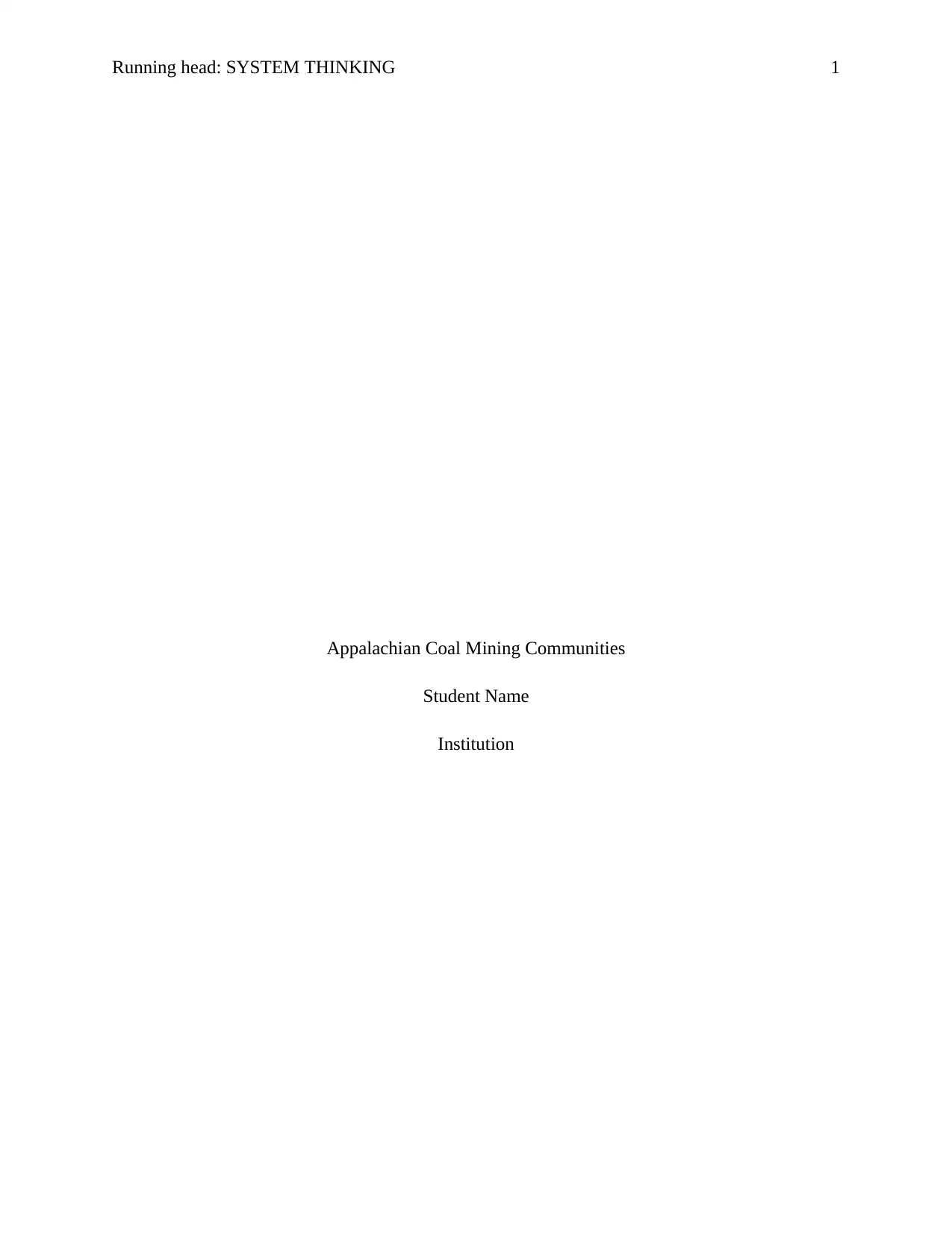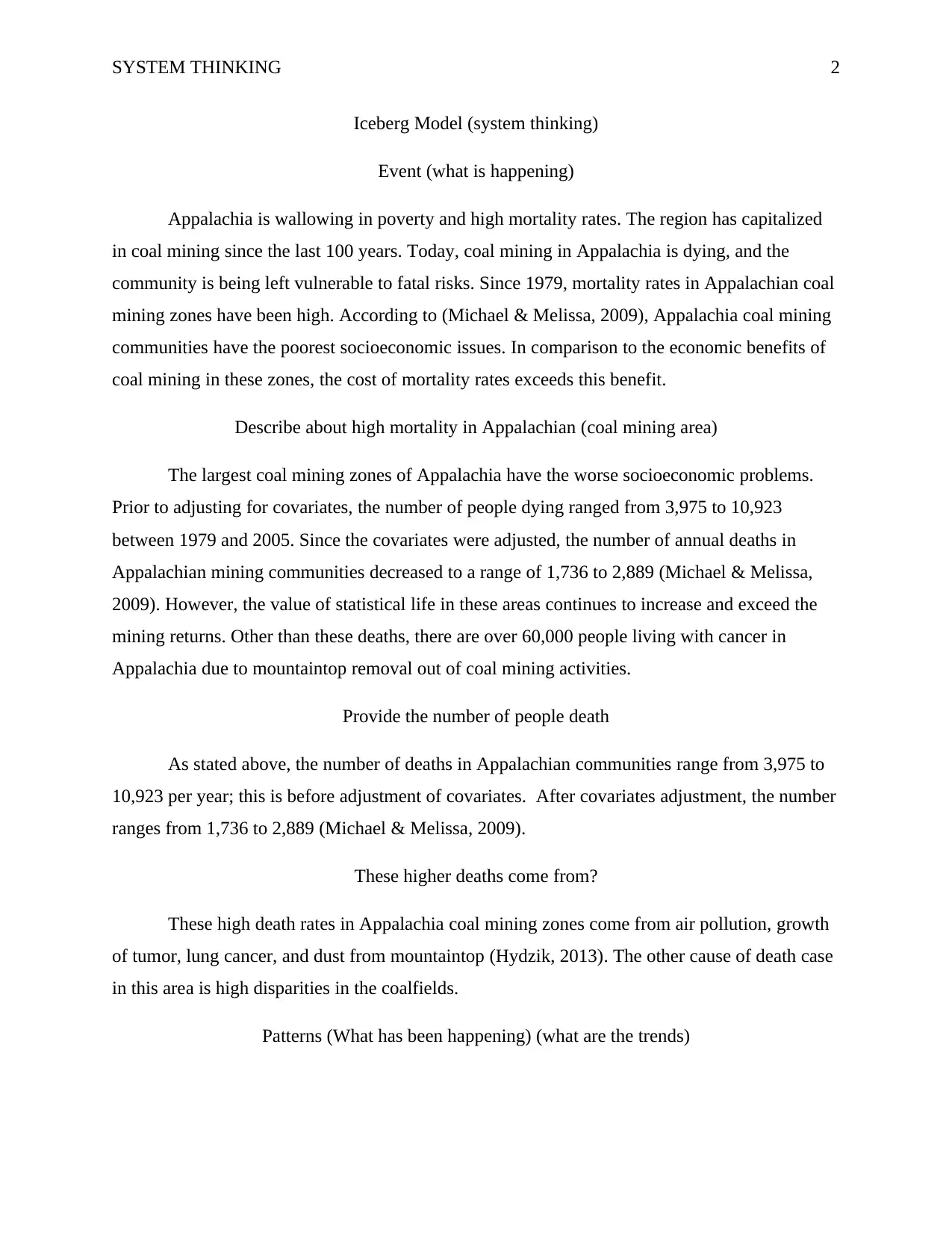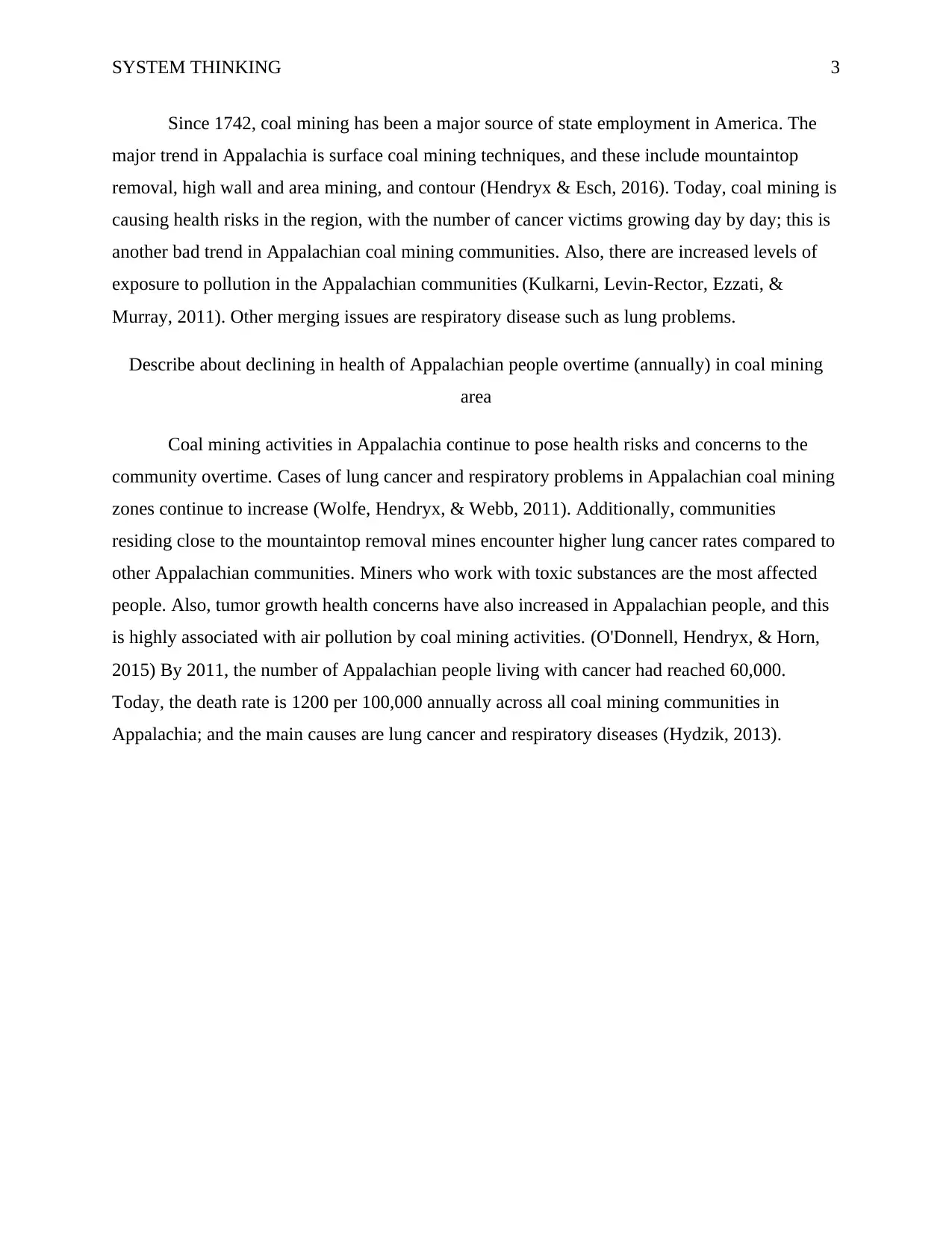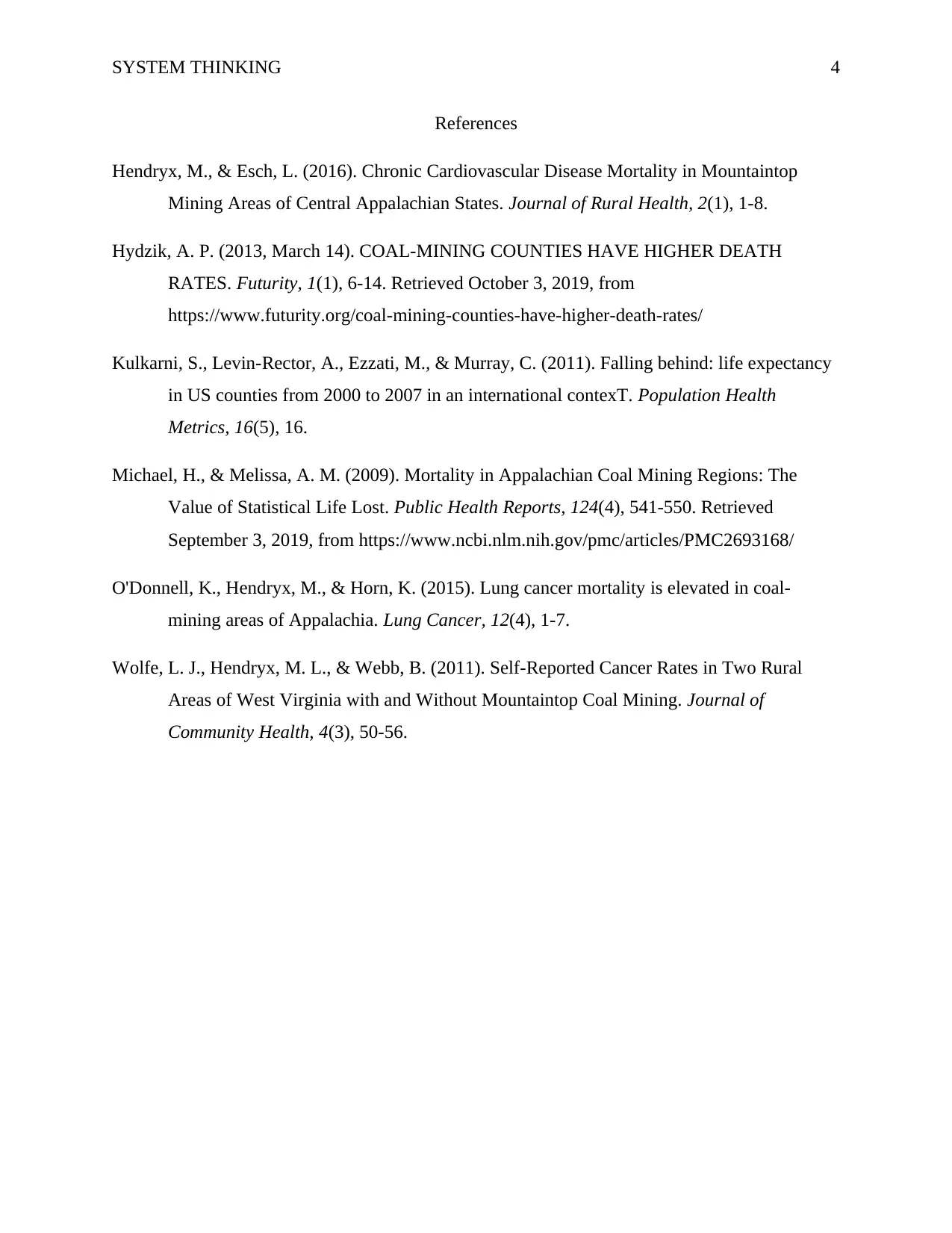Analyzing Health and Mortality in Appalachian Coal Mining Communities
VerifiedAdded on 2022/09/30
|4
|918
|461
Homework Assignment
AI Summary
This assignment analyzes the health crisis in Appalachian coal mining communities through a system thinking lens, focusing on mortality rates, lung cancer, and respiratory diseases. It examines the historical context of coal mining in Appalachia, highlighting the shift from economic benefits to severe health risks. The analysis delves into the trends of increasing cancer cases, pollution exposure, and the impact of mountaintop removal, citing statistics on mortality and disease prevalence. The assignment explores the root causes of these issues, including air pollution, disparities in coalfields, and the effects of toxic substances on miners. The Iceberg Model is used to explain how events, patterns, and underlying structures contribute to the health crisis. The assignment uses several peer-reviewed research articles to support the findings and understand the impact of coal mining activities on the health of Appalachian communities.
1 out of 4








![[object Object]](/_next/static/media/star-bottom.7253800d.svg)